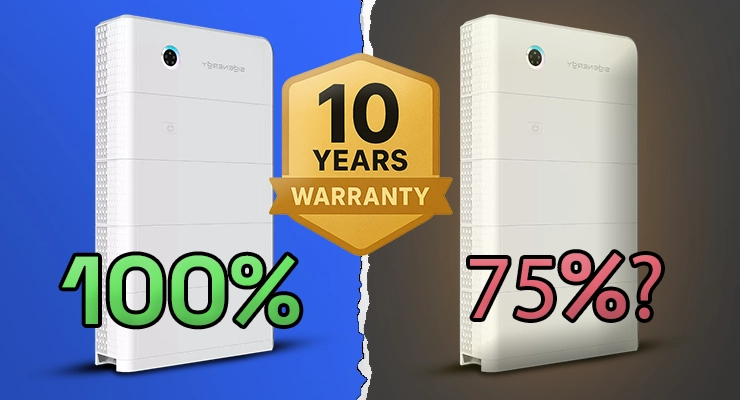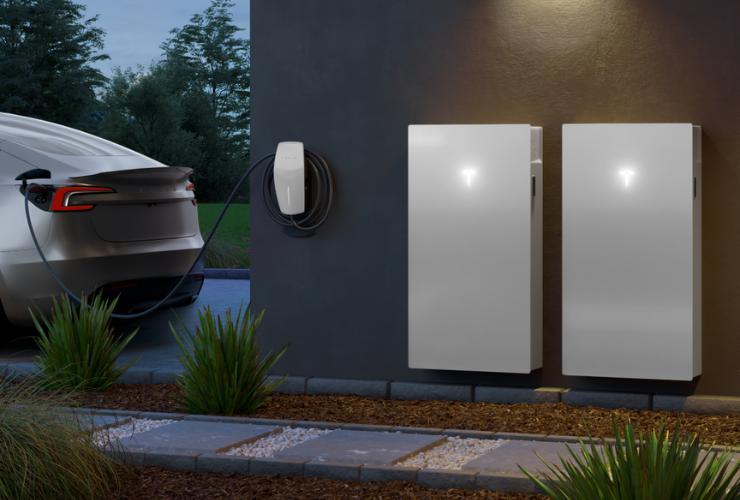Fast read
Yes — most home battery warranties in Australia do cover performance degradation, not just outright failure.
Look for these three key warranty limits:
Years: Usually 10 years.
Throughput: Total energy output allowed (e.g. 30MWh).
Cycles: Max number of full charge/discharge events (e.g. 6,000).
Most batteries are guaranteed to retain 60–70% of original capacity by the end of the warranty period. If your battery drops below that, you may be eligible for a repair, replacement, or refund — though labour costs may not always be covered.
Do battery warranties cover performance degradation?
A home battery is a significant investment in your energy future, so it’s natural to want assurance that it will perform well for many years. One of the most common questions we hear is whether the warranty protects you if the battery’s ability to hold a charge diminishes over time.
The straightforward answer is yes, but the details are in the fine print, unlike a simple product warranty that covers a complete failure, a battery’s performance warranty addresses its natural, gradual loss of capacity—a process known as degradation.
Understanding the three core parts of a battery warranty
When you look at a battery’s warranty document, you will usually find three key metrics that work together to define its lifespan and performance cover. The warranty typically ends as soon as the first of these three conditions is met.
- Warranty Period (Years): This is the most straightforward part—the length of time the warranty is valid. For most quality home batteries in Australia, this is 10 years, though some premium models may offer longer terms.
- Throughput (MWh): This measures the total amount of energy the battery is guaranteed to charge and discharge over its life, usually measured in megawatt-hours (MWh). For example, a 10kWh battery might have a throughput warranty of 30MWh, meaning it’s warranted to deliver that total energy before the coverage expires. This is often the most critical, and sometimes limiting, factor for households with high daily usage.
- Cycles: A cycle is one full charge and discharge of the battery. Warranties often specify a maximum number of cycles, which could be around 6,000 to 10,000. For most homes that cycle their battery once per day, the years or throughput limit will likely be reached before the cycle limit.
How is performance degradation covered?
The key component that addresses performance is the “end-of-warranty capacity” guarantee. This is the manufacturer’s promise that your battery will still be able to store a specified minimum percentage of its original capacity by the time the warranty period concludes.
Most manufacturers guarantee a retained capacity of 60% to 70% after 10 years. For a 10kWh battery, a 70% retained capacity warranty means that at the 10-year mark (or after the warrantied throughput has been reached), it should still be able to store at least 7kWh of energy. If it falls below this level within the warranty term, you are entitled to make a claim.
- Sigenergy: Warrants that its batteries will retain at least 70% of their usable capacity for 10 years or 6,000 cycles.
- Sungrow: Offers a 10-year warranty that also covers performance degradation, ensuring the battery meets specific performance levels over its lifespan.
- Tesla Powerwall: The warranty guarantees the Powerwall will retain at least 70% of its capacity after 10 years of normal use.
What happens if you need to make a degradation claim?
If you believe your battery’s capacity has dropped below its warrantied level, the first step is to contact your accredited installer. They will typically guide you through the process, which may involve:
- Data Analysis: Using the battery’s monitoring app or software to check its performance data and history.
- Formal Testing: In some cases, the manufacturer may require a specific test procedure to be run by the installer to officially measure the current capacity.
- Submitting a Claim: Your installer will then submit the claim to the manufacturer on your behalf, including the necessary data and proof of purchase.
If the claim is approved, the manufacturer will decide on the remedy. This could be a repair of the battery, a replacement with a new or refurbished unit of at least equivalent functionality, or sometimes financial compensation. It is important to note that labour costs for the assessment and replacement may not always be fully covered by the manufacturer’s warranty, so it’s wise to clarify this with your installer.
The role of Australian Consumer Law
Beyond the manufacturer’s warranty, you have rights under Australian Consumer Law (ACL). The ACL guarantees that products must be of acceptable quality, fit for purpose, and last a reasonable time. If a battery fails prematurely or degrades significantly faster than could be reasonably expected—even if just outside the warranty period—you may still have a right to a remedy from the retailer or importer.
Key questions to ask your installer
To ensure you have clarity and confidence in your purchase, always ask your installer these questions:
- What is the guaranteed retained capacity at the end of the warranty?
- What is the total energy throughput limit in MWh?
- Who handles the warranty claim process—the installer or the manufacturer directly?
- Are labour and transport costs covered for a warranty claim?
- Does the manufacturer have an office and support team based in Australia?
Choosing a battery from a reputable brand with a strong Australian presence and a clear, comprehensive warranty is one of the smartest decisions you can make. It ensures your investment is protected and that you have a reliable partner to turn to if the system’s performance doesn’t meet expectations.

